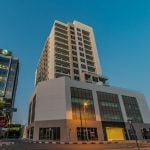The rental market in Dubai continued its robust performance during 2024, recording exceptional levels of lease agreements both in volume and value—evidence of strong momentum and increasing maturity in the city’s housing sector.
According to data from the Dubai Land Department (DLD), rental contracts executed during the year injected approximately AED 86 billion (US$23.5 billion) into the hands of property owners—resulting from the registration of about 956,180 lease contracts (both new and renewed).
That total represented a 13.7% increase in contract numbers compared to 2023 (which saw around 841,000 leases)—an increase of some 115,800 contracts year‑on‑year.
Renewal vs. New Contracts
Renewed leases made up just over half (51%) of all recorded contracts, about 490,000 agreements—up 8.5% from approximately 451,700 in the previous year. These renewals were valued at about AED 47 billion, equivalent to 54.5% of the total rental value for 2024, and exhibited growth of 7.3% compared to 2023.
New lease agreements accounted for the remaining 49% (~466,100 contracts), rising sharply by 20% from 2023’s 389,200. Their aggregate value exceeded AED 39 billion—about 45.5% of total rental income—marking a significant jump of roughly 17.3%.
This dynamic reflects strong demand both from existing tenants choosing to stay and a growing number of new entrants into the market—from individuals to companies relocating to Dubai.
Top Rental Zones
The five highest‑earning areas in terms of lease value for 2024 were:
-
Business Bay / Dubai International Financial Centre area (“The Business Bay/DIFC” cluster): AED 3.54 billion (up 23.5%)
-
Downtown Dubai / Burj Khalifa area: AED 3.45 billion (up 16.4%)
-
Dubai Marina: AED 3.40 billion (up 2.12%)
-
Al Thanyah Al Khamsah (Fifth Thuina): AED 2.23 billion (up 13%)
-
Al Barsha First: AED 2.11 billion (up 4.5%)
These figures underline the concentration of rental‑income‑heavy zones in prime, central locations—but also show outward areas gaining traction.
Market Engines & Structural Shifts
The rental boom in 2024 is rooted in several inter‑linked trends:
-
Large fluxes of international talent, business relocations and residency flows following the post‑COVID global reset.
-
Sustained population growth and demand for housing across segments—both luxury villas and more affordable communities.
-
Increased lease renewals, suggesting tenants are viewing Dubai less as a transient stop‑gap and more as a long‑term home.
-
Evolution of demand into outer districts, where infrastructure improvements and relative affordability now attract tenants and investors alike.
Such structural shifts point to a rental market that is not only buoyant—but maturing and diversifying.
Villas Lead the Charge
In 2024, villas emerged as a standout performer: for example, average villa rents increased from ~AED 37.3 per sq ft in 2023 to ~AED 44.6 in 2024—a growth of almost 19.6 %. This leap reflects strong demand from families and affluent residents seeking more space and lifestyle‑oriented homes.
Meanwhile, average rents for apartments and other unit types displayed more modest or even corrective movements—indicating a market fine‑tuning rather than unchecked escalation.
What’s Next: Toward a Million Leases?
Looking ahead, projections suggest that annual lease registrations in Dubai could cross the one‑million mark in the coming years as resident and investor flows continue, supported by the expected population reaching ~5.8 million by 2040.







Leave a Reply